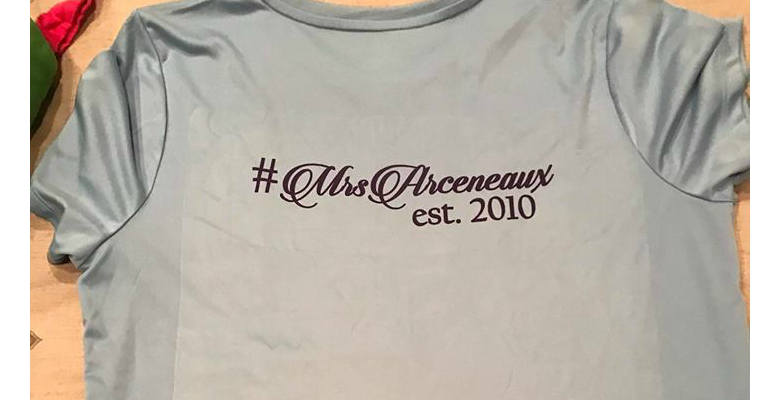
Aside from ghosting, the other major issue sublimators face is the dreaded transfer paper lines. Once those show up on the garment, that item is ruined. So, carefully testing your setup and getting this right is crucial.
Several steps can be used to eliminate lines and, typically, the answer is some combination of those steps or, at times, all of them.
I recommend testing to see what method or methods will work best for you and your set up. There is no real magic bullet as there are several variables like your heat press, the pressure, and temperature used as well as the makeup of the polyester fibers of that garment. So, here are three steps that can be used to eliminate those transfer lines in order.
- The simplest way to overcome this is to make the paper larger than the heat press platen the garment is resting on. Most of the time the lines are caused by the thickness of the transfer paper getting implanted into the melted polyester. This only works if the lines are due to the paper, not the press itself. You can also create a quick Band-Aid effect by tearing the edge of the transfer paper, so it is more gradual. This will not eliminate it, but it will make it less noticeable.
- Many times, the real culprit is the heat press pressure. This will crush the garment and the paper, but the edge of the press is being embedded into your garment as well. First and foremost, make sure the garment is laying loose over the platen, and not being stretched. Then start by adjusting your pressure so that it is a very light pressure but still enough to give you a good transfer. Do a quick test transfer, and if the transfer is good, then you are set. If it is light and not enough ink transfers, then slowly increase your pressure until you get to a point where you get a good transfer, but no transfer lines. You also should consider your temperature and time. We all typically start at 400 degrees F for 60 seconds, but ideally, we want to transfer with as little heat and time as we can to get a good transfer. Try light pressure, at 385 degrees F for 35 seconds. You might be surprised at the results from this minor change.
- Finally, this is the way to guarantee you don’t have transfer lines, though it is a bit more work and requires extra consumables. To do this, you need a special heat-resistant foam. Not the pillows that are encased in polytetrafluoroethylene (PTFE), but just the foam itself. With that foam, you want to cut it down to be smaller than your transfer paper, but larger than the image you are trying to transfer. To calibrate the pressure needed on your press, put the heat-resistant foam in it and when the press closes, it should reduce the size of the foam by half its normal size. The top heat and the bottom platen should be about 1/2″ away from each other with the foam in the middle. Then place the foam on the location where the image is going to be pressed and cover the entire platen with a silicone or PTFE cover sheet. Next, place the garment on the press in a threaded fashion and align the image area over the top of the foam piece. Put the transfer sheet over the top of the foam piece on the garment, so the edges of the transfer are out over the edges of the foam. Lastly, place a blowout sheet over the top of the transfer and press for the correct time and temperature.



